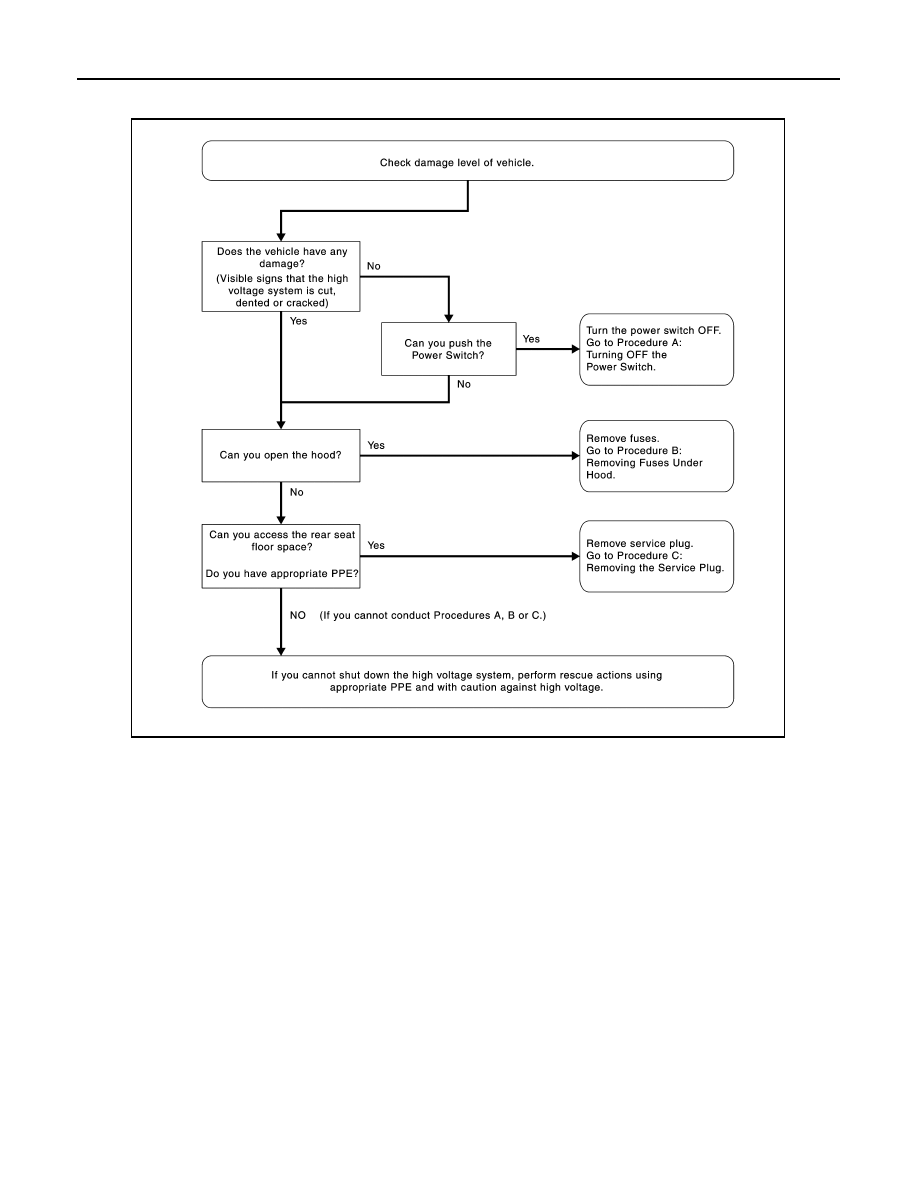Nissan Leaf. Manual - part 707

GI-40
< PRECAUTION >
CAUTIONS AS TO HIGH VOLTAGE
bag maintains voltage for 3 minutes. There is a possibility of sudden SRS air bag inflation due to har-
ness short circuit or damage and it may cause serious injuries.
Indications the high voltage system is ON
1. If the READY indicator is ON, the high voltage system is active.
2. If the charge indicator is ON, the high voltage system is active.
3. If the air conditioning remote timer indicator (located on the HVAC controller) is ON, the high voltage sys-
tem is active.
4. If the remote controlled air conditioning system is active, push the power switch to the ON position. This
will turn OFF the remote controlled air conditioning system.
NOTE:
Remote controlled air conditioning system is a feature that allows the vehicle owner to activate the air
conditioning system via telematics communication (cell phone, personal computer, etc.). When this sys-
tem is active, the air conditioning remote timer indicator (located on the HVAC controller) is illuminated.
Before disconnecting the 12V battery terminal, if necessary, set the parking brake, lower the windows, unlock
the doors, and open the rear hatch as required. Once 12V battery is disconnected, power controls will not
operate.
Procedure 1: Turning OFF the Power Switch.
1. Check the READY indicator status. If it is ON, the high voltage system is active.
2. Press the power switch once to turn OFF the high voltage system. Then verify whether the READY indica-
tor is OFF.
3. If possible, keep the intelligent key at least 5 meters (16 feet) away from the vehicle.
4. Open the hood.
5. Disconnect the negative 12V battery cable. Insulate the negative 12V battery cable terminal with insulated
tape.
JSAIA1828GB